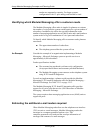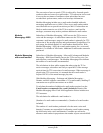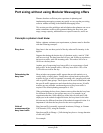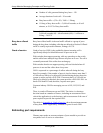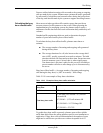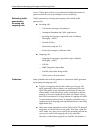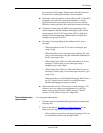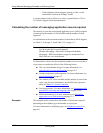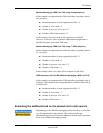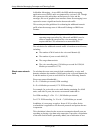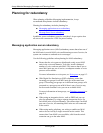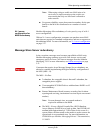
Avaya Modular Messaging Concepts and Planning Guide
12-26 November 2004
Avaya Modular Messaging Concepts and
Planning Guide
— If the telephone system supports queuing of calls, see the
calculations based on the Erlang C model.
A system planner needs to allow for a safety or growth factor of 5% to
15% when sizing the initial implementation.
Calculating the number of messaging application servers required
The number of ports that a messaging application server (MAS) supports
is restricted by the number of slots available and the number of cards
supported.
For information on the maximum number of cards that an MAS supports,
see Table 11-4 on page 11-6 and Table 11-5 on page 11-7.
Note: Modular Messaging—Avaya MSS supports a maximum of
five MAS units per voice mail domain.
Modular Messaging—Microsoft Exchange and Modular
Messaging—IBM Lotus Domino support a maximum of ten
MAS units per voice mail domain.
To determine the correct (not the minimum) number of servers needed, it
is necessary to consider the effects of the following factors:
! The voice mail domain design. For more information, see
General rules for voice mail domains
on page 10-2.
! Switch configuration and integration. For more information, see
Switch integration
on page 8-3.
! The number of PCI slots available and the number of ports on the
voice card. For more information, see the MAS port capacities
tables in Chapter 11, System capacities.
! Port usage patterns. For more information, see Estimating traffic
generated by incoming and outgoing calls on page 12-24.
! MAS load balancing. For more information, see Messaging
application server load balancing on page 13-5.
Examples The examples in this section show the number of MAS units required,
depending on the telephony type and number of voice ports.
For more information on telephony types, see Telephony protocols
on
page 8-8.



